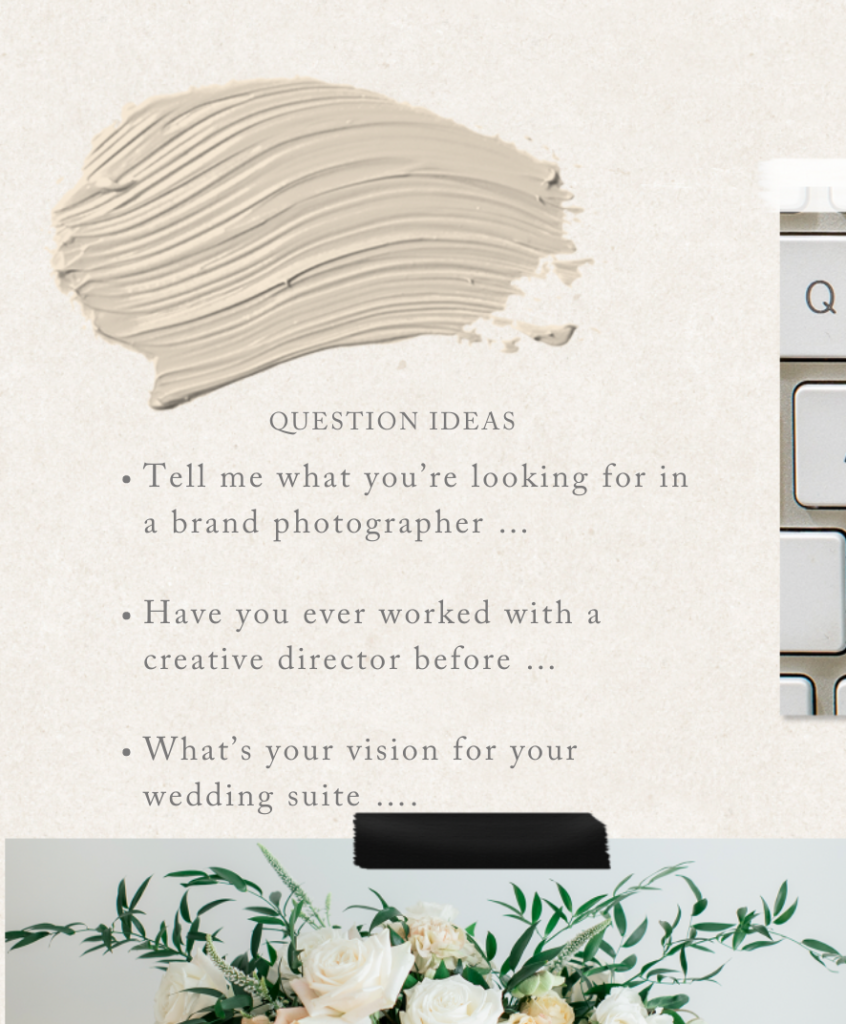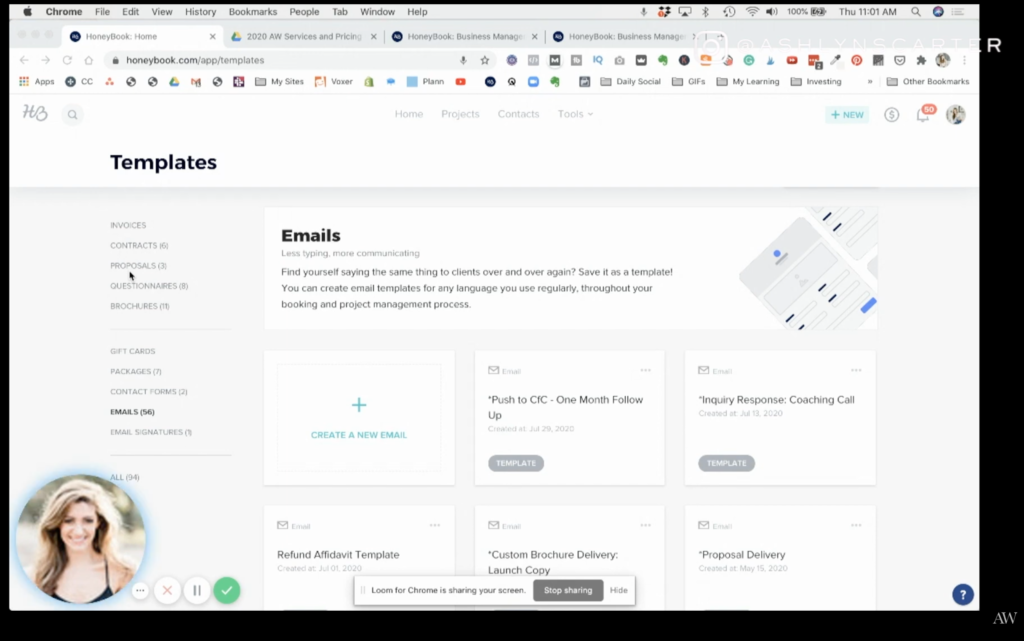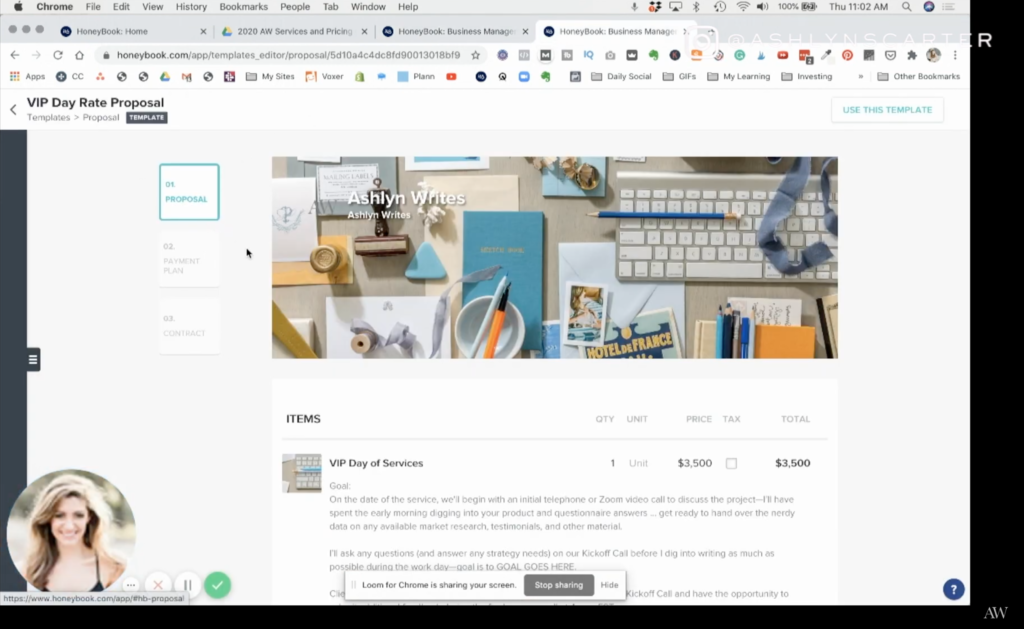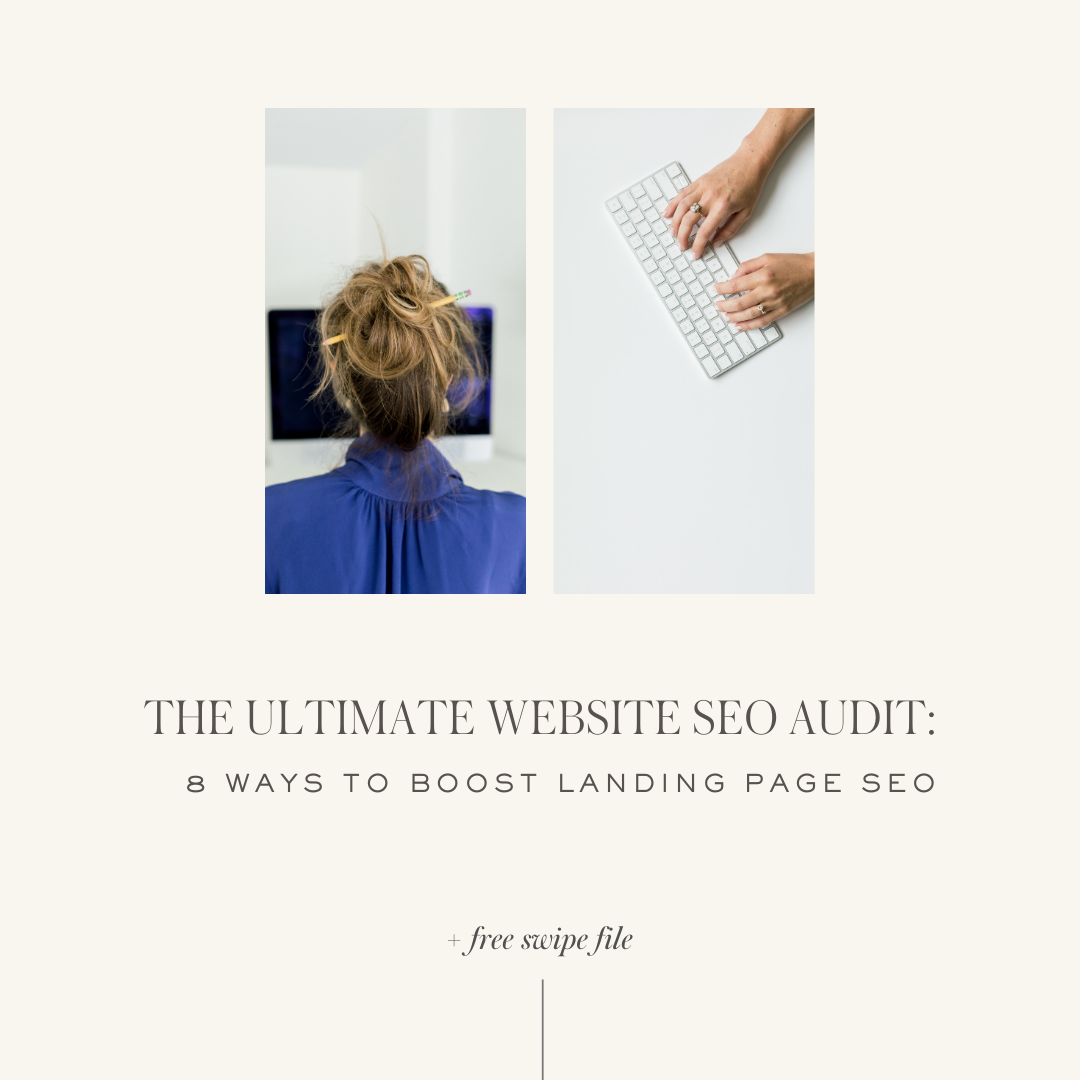You asked ➡️I’m delivering. Today I’m walking you through my inquiry & sales call workflow so you can keep up those bookings and close deals.

Just me orrrr have you ever freaked out about getting on a sales call to communicate your pricing with a potential client? You’ve gotten sweaty palms… maybeeeeee even some sweaty pits… 😳
They’re so stressful, trust me, I get it.
Well, this little writer who hates the phone (I’m showing my millennial when I say that) has used these tips that I’m giving you to close $10,000 brand messaging and website copywriting packages, $25,000 launch copy and strategy packages.
I’m telling you, I had to learn this the hard way—and that’s what I’m unpacking in 3 steps, which are creatively before the call, on the call, and after the call.
Let’s do this!
No. 1 | Before the call
I’m starting off this workflow about midway through the sales funnel, starting at the point when an inquiry fills out the application/contact form and they reach out.
First up is Price Anchoring with my inquiry response template and pushing them to the call—I want to prepare them with price anchoring AHEAD of time, so there’s ZERO sticker shock. I shared this with students lately, but how awkward is it to go into a restaurant where they don’t list the prices?
*hella awkward.*
This is why I STRONGLY believe they need to see your price point BEFORE the call.
You need to AT LEAST be sending a pricing magazine, if you don’t have pricing on your website. I’ve used these tips to close $25,000 launch copy packages, $9,000 email funnel/ad copy packages, $10,000 website & brand messaging packages, and everything in between. Copy is expensive. Many done-for-you services are.
Bottom line: Most people get embarrassed when they’re put in a situation where they have sticker shock, especially if it’s publicly—we want to ~completely~ avoid that. Make sure that you’re putting price anchoring out before, which is why in that inquiry response, in that templated part of the workflow, I’m *always* putting my pricing in front of them.
In this week’s video on my YouTube channel, I break down this part of the workflow in HoneyBook, the client relationship management tool that I’m ~obsessed~ with using in my business. Click here to get a behind the scenes look!

No. 2| Preparing for the call.
I’ve talked about it—probably ad nauseam for those of you that have been around for a while— I am obsessed with batching my days. I’ve been doing it since 2017 and I stack all of my sales calls or calls in general podcast interviews as much as I can on one day out of the week.
That’s especially helpful given everything that’s going on in the world and childcare being a little crazy, I know I have that ONE day where I need to be available.
More importantly, it helps you with the idea of context switching.
If I *just* have calls and sales calls on that day, I’m in a state of mind and a state of flow where I know that I’m just selling them on the call and doing my thing. I don’t have to worry about stopping and going with different projects.
On Thursdays, I have a notebook that is only sales calls, partnership calls, podcast prep, anything that is calls-related.
Each person gets a page and the first thing I do is research the client and find a back pocket hook, basically a connection point. I’m gonna look up their website, look them up on a search engine, go to their social media accounts and see if I can find that one point of connection point that I can use when we hop on that call. I can say: “oh, I see we are both so and so sent me your way, loved working with her”.
Okay, so I write that down, and then the next part of the prep, I write down these three secret weapons.
**Get ready, this is gonna blow your mind.**
- One Tip
- One Article/resource
- One example
Think of one tip that you can share with this potential client, give them some value add, think of one article or podcast or book or something that you can use to show them that you know exactly what they’re talking about.
Go ahead and pull it up in a tab but find some example of a client that I’ve worked with before or a project that I’ve done that’s similar to this that I can communicate with the client.
(This is 100% not my idea, this is from Joel Kottke. He actually has a whole training on this. I’m not an affiliate or anything. I just found that super helpful, Joel taught me to have these three things prepped; )
I also go ahead and decide before the call, exactly what I wanna sell them and exactly the price point I want to sell them at.
Lastly, I go through their application and I jot down any questions I have about the project, clarification that I need on it, etc etc.
No. 2| Being on the call
I have a 95 to 100% close rate on sales calls—I think that’s in large part due to this secret:
I don’t get on the phone with anybody that I, A) don’t wanna work with and B) I don’t think I could probably book.
To me otherwise, it’s a waste of everyone’s time. I stay in my sweet spot, I know who I serve and who I don’t serve—I talk more about finding your niching a lot, but that’s my stance.
When I’m looking at these sales calls that are all batched out, it’s Shark Tank mode, baby, I want to work with these people, I want their business. I know I can do a dang good job.
Your goal is to have a call template, and RUN THE TEMPLATE:
- BE EARLY. I can count on 1 hand the calls I’ve been late to, and they’ll haunt me until my dying day. That matters. You get one chance to make a first impression.
- Here’s how the conversation goes: First up, I use that back pocket hook I looked up during my call prep. Secondly, I always record and let them know I’m recording. This is important because, in many states, it is illegal to record somebody on a call *without* letting them know. 🚨You need to go ahead and tell them. 🚨
- Tell them how it’s gonna go/an agenda. They’re looking to you to be the leader—step into the driver’s seat and lead them, guide them through, they are on your turf. If you get these first things right, it’s starting to get easy.;)
- LET THEM TALK FIRST. It’s so important to LISTEN and let them talk. Always. You need to have your questions ready to guide it. Tell me what you’re looking for in a brand photographer … have you ever worked with a creative director before … what’s your vision for your wedding suite …. In here, I’m sliding that article or thing I read—omg, I was just reading an article talking about that … I’ve got 20 minutes to prove I’m not an idiot, I’m not wasting time. 🙂

- It sounds like you’re looking for XYZ, I have a perfect solution for that. Repeat back the problem, literally look down at your notes and say things back to them. RESULT. Remind them of the RESULT they want, which you can do by pulling up the example you had.
- So, you cool if we talk about the money? At this point, they KNOW MY PRICING and I’ve just shown them everything. Practice this 100 times. Look them in the eye when you say your price, be confident. Confidence in your pricing is a whole ‘nother thing, but you have to nail this part. It’s also nice to round out by showing them that tip or maybe I have a freebie, this is a way to show them like,if she does that for free, what could she do with the full budget?
Quick example: When I did calligraphy and wedding stationery I would always give, during this part of the process, my brides a spreadsheet and a guide, like a PDF guide on how to start collecting addresses. I knew I was gonna need that one day, but I also wanted to give them a freebie.
No. 3| After the call
Go ahead and get that proposal ready and send it—Do What You Say You Will Do—SEND THE DANG DELIVERABLE
This is where templates slay all day. 🙌
Here is a quick snapshot of what this looks like in HoneyBook. 👇 👇
We have our proposal emails ready to go—they go in tandem with either your brochure or proposal. Brochure is more meant for a pricing guide and proposal is obviously meant for a proposal. We kind of do a little hybrid of them.

Here’s an example of a brochure, but actually, it’s for the proposal. I hope that’s not too confusing. This is where we would give this over to the client to look at for review.

Once they are secure with what they want and we have that information from them, we’ll go ahead and send over the actual proposal that includes payment plan info for them and contracts, so we can get it signed, buttoned up and ready to move on.

Now, you know how to nail your sales call. What about another email template and pitch process you may need? In this video on my YouTube channel I show you all about how to create an email template for your media pitches, you can watch it here!
As always, I love talking about workflow systems and processes that I use in my copywriting business, so let me know if you have any questions.
LOVE THIS SLASH NEED IT BACK-POCKETED FOR LATER?
CLICK BELOW TO PIN IT!
Reading Time: 7 Minutes Reading time: 7 min. You asked ➡️I’m delivering. Today I’m walking you through my inquiry & sales call workflow so you can keep up those bookings and close deals. Just me orrrr have you ever freaked out about getting on a sales call to communicate your pricing with a potential client? You’ve gotten sweaty palms… […]




comments +